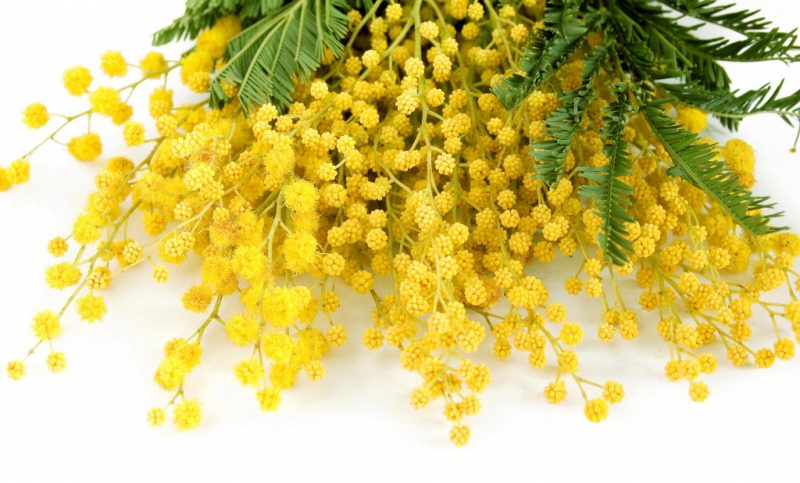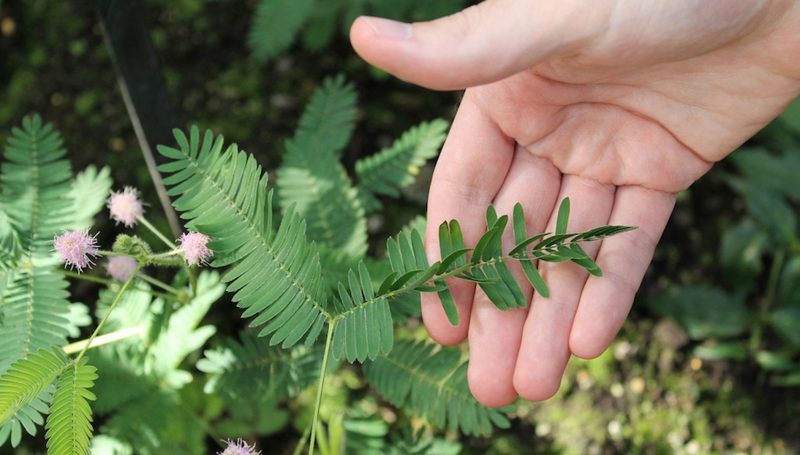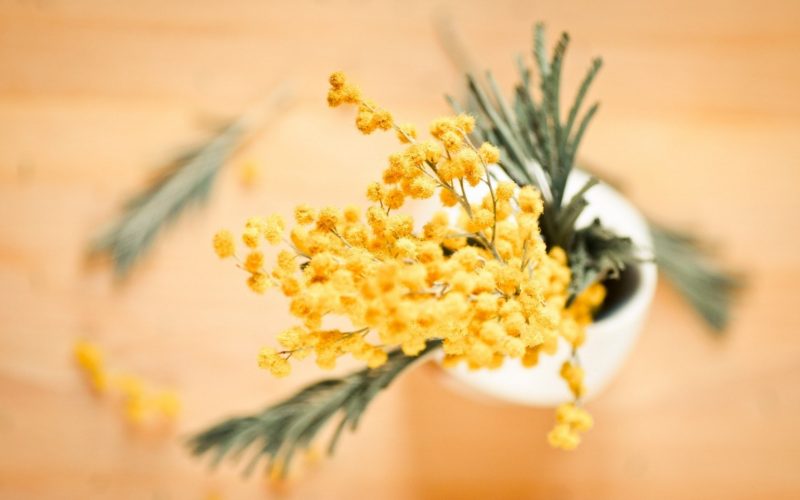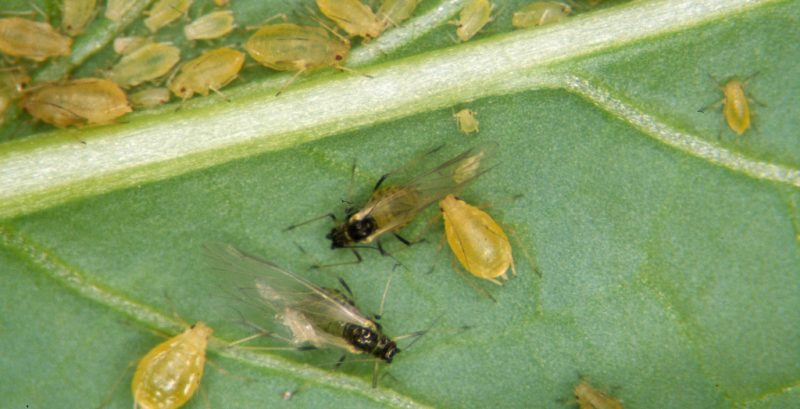Having become a symbol of International Women's Day in Russia, a mimosa flower enchants flower growers with its graceful bright orange balls and fluffy leaves. The elegant plant looks great in flower arrangements, differing in tenderness and modesty.
Material Content:
What does the mimosa flower look like and where does it grow
The birthplace of the yellow beauty is Australia, from where she was brought to the tropical regions of the USA, Asian and African countries. Under natural conditions, the genus has about three hundred species represented by trees and shrubs. In Russia, mimosa is found in nature on the Black Sea coast, in the foothills of the Caucasus and in Abkhazia, where it does not grow above 12 m. In the native expanses, where mimosa is also known as acacia silvery, individual specimens can grow up to 45 m.

What does mimosa look like?
- The sprawling crown is formed by brown shoots with shallow cracks.
- Leaf plates have a dissected shape.
- During flowering, which occurs in the second half of winter - the first half of spring, small yellow flowers are observed, collected in spherical heads. The latter, in turn, form inflorescences in the form of a brush, which make up the panicles.
- The trunk of the culture is quite prickly, which is the reason for the second name of the plant.
The leaves of the plant have an interesting reaction - they curl when touched. The phenomenon is explained by a protective mechanism, thus saving leaves from tropical rainfall.
Common types and varieties
Today, there are about 600 species of numerous genus.

Among them in indoor floriculture are used:
- Mimosa flower bashful.The species is native to Brazil, represented by evergreen shrubs or shrubs, which in the natural environment reach a height of 1 m. Flowering, in which pink-purple flowers are observed, occurs in the summer. To maintain decorativeness, the variety is cultivated as an annual plant.
- Rough Mimosa - an inhabitant of South America with white inflorescences.
- Mimosa is lazy. Beautiful flowering decorative appearance with white heads of small flowers and erect, branched shoots up to 50 cm in height. Fern-like leaves curl when touched.
How to grow mimosa in a pot
To grow a tropical inhabitant at home was successful, it is necessary to create optimal conditions for him.

- Lighting and location. To create an approximate natural environment, you should place a flower pot on the windowsill of the western or eastern window, where direct sunlight does not fall at noon. To exclude the possibility of burns, it is necessary to accustom the plant to bright lighting gradually.
- Temperature. In the summer-spring period, the culture feels comfortable at room temperatures in the range from 20 to 24 ° C. With reduced daylight hours, it is recommended to move the flower to a room with a temperature of 16 - 18 ° C. The maximum permissible temperature value, below which the mercury column should not be allowed to lower, is 15 ° C.
- Humidity. The representative of the tropical flora needs an increased level of humidity. A tank with water is installed next to the pot, and daily spraying is also carried out. For water procedures, chlorine-free distilled water is used.
- Soil requirements. In order for the flower to develop well, it is necessary to fill the container with a fertile substrate with a loose structure. The soil mixture is prepared by mixing sheet, turf, peat, humus and sand in equal parts.
Home Flower Care
For intensive growth and lush flowering, a mimosa in a pot needs systematic care in compliance with the agrotechnical requirements for growing a crop.

Moisturizes the flower with standing water at room temperature. The frequency and volume depend on the season: in the spring-summer period, immediately after the drying of the surface layer of the earthen coma, the plant is watered abundantly. From mid-autumn, watering becomes moderate and is practically reduced for the winter season.
To ensure abundant flowering, you should feed the flower in the summer every two weeks. For top dressing, you can use complex mineral fertilizers for flowering plants with a high content of phosphorus and potassium. When preparing the solution, the concentration should be reduced by half, so as not to burn the chemically sensitive root system.
At home, mimosa, it is silver acacia, is grown as an annual plant, the life cycle of which can be doubled if the elongated shoots are shortened in a timely manner.
When placed on a well-lit windowsill, young shoots soon begin to grow back.
Since a flower is grown as an annual crop, transplantation is not carried out.
If such a need arose, then it is worth sticking to the following scheme:
- A new tank of similar sizes is selected.
- At the bottom of the pot is placed a drainage layer of gravel or broken brick.
- A flower with an old earthen clod overwhelms.
- If necessary, the voids formed are filled with a fresh substrate, after which the mimosa is watered.
Pest and Disease Control
Such a home flower is most often attacked by aphids and spider mites, which feed on the juice of foliage. To prevent settlement, a high level of humidity in the indoor environment should be maintained. At the first signs of vital activity of insects, mimosa is treated with an insecticide.

Among the diseases, gray rot is distinguished, which develops with soil overflows and overcooling of the culture. As protective measures, it is recommended to resort to spraying the shoots with a fungicide according to the manufacturer's instructions indicated on the package and normalize the conditions of detention.
Breeding methods
Mimosa (Mimosa) at home propagated by seeds and cuttings.

To implement the first method in February, carry out such activities:
- Seeds are distributed on the surface of the substrate, composed of sand and peat in equal proportions, and then lightly sprinkled with sand.
- Crops are kept for a month in a refrigerator for stratification.
- In March, the tank is rearranged in a warm room with a temperature of 25 ° C.
- After the appearance of 1 pair of real leaves, seedlings dive into individual pots.
When propagated by cuttings, the following actions are performed:
- From the apical parts of the shoots, cuttings 10 cm long are cut.
- Cuttings are freed from lateral branches and kept in a growth stimulator for about 8 hours.
- The tanks are filled with a soil mixture of peat and sand, into which cuttings are buried for 2 internodes.
- Landings are covered with bottles and placed in a warm, well-lit place.
- During rooting, which can last from 2 to 3 months, the soil is kept moist.
Thus, in order to admire and enjoy the aroma of mimosa, it is not necessary to wait on March 8, when the store shelves will be littered with lush branches. With minor troubles, you can grow silver acacia just at home in a pot.












